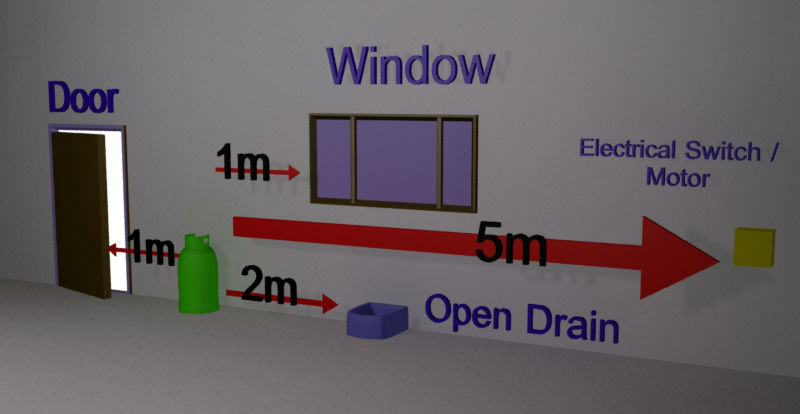Safe Appliance Installation
Do-It-Yourselfers (DIY) put themselves and their families at risk when they attempt to install or repair gas appliances on their own. It is important that homeowners call a registered gas installer before they attempt to do a gas-related project on their own. Gas suppliers can help a homeowner find a local qualified technician who knows how to do it right, and will ensure the safety of homeowners and their neighbours.
Here at Gas Xpress we are a comprehensive company of which we supply LP Gas, Gas products as well as provide services of installation, repairs and valuable advice.
Installation Regulations
If you already have a Gas line installed but you don’t know if it is legal, compare it to the following diagram. Give us a call just to make sure!

A – 1m sideways from Doors and Windows
B – 2m from Drains and Air Vents
C – 3m below windows, unless non combustible roof is installed between containers and windows
D – 1m from property boundary unless boundary is a Fire Wall (if only 2x48kg bottles are installed). If installation is more than 2×48 kg bottles, then it must be more than 3m from boundry.
E – 5m away from a switchable electrical point i.e. plug socket, main power etc. (not a light) to the side of the bottles, or 1.5m above the bottles.
Only Class 1 or 2 copper pipe can be used. NOT what is used in plumbing. Or Approved gas piping.
All copper pipes going through a wall must be sleeved.
Flexible hose may not be more than 2m and may not go through any partition at all (including wood and dry wall)
Safe Appliance Operation
A qualified service technician should perform an appliance inspection once a year. Only qualified service technicians have the proper training to install, service, maintain, and repair appliances.
A gas oven or range-top burners should not be used to provide space heating, portable heaters are never to be used indoors (unless they are designed and approved for indoor use), and the use of a barbecue grill (propane or charcoal) indoors for cooking or heating is never acceptable.

